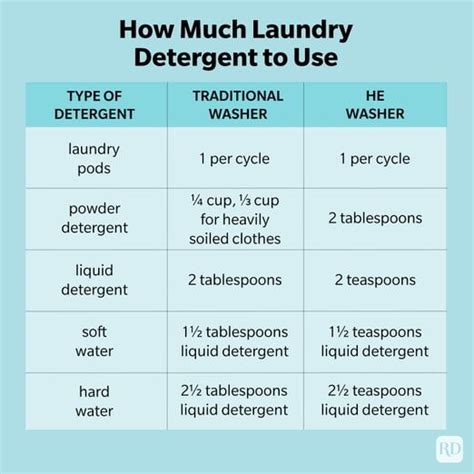
Using too much laundry detergent is a widespread problem that not only wastes money and product but can also damage washing machines and leave clothes dirtier, according to cleaning experts. Contrary to common belief and marketing strategies, more detergent does not equate to cleaner clothes; in fact, the opposite is often true.
The average person uses approximately double the amount of laundry detergent needed for an average load, spurred on by confusing detergent cap measurements and a general misconception that more is better. “People see those lines in the cap, and they fill it to the top,” says experts, adding that this overuse leads to detergent buildup in clothes and machines, resulting in stiff fabrics, lingering odors, and potential appliance malfunction.
The Detrimental Effects of Overdosing Detergent
Overusing laundry detergent presents several problems, starting with the residue it leaves behind on clothing. Excess detergent doesn’t fully rinse out during the wash cycle, particularly in high-efficiency (HE) machines that use less water. This residue can make fabrics stiff, attract more dirt, and cause skin irritation, especially for people with sensitive skin or allergies.
Furthermore, the buildup of detergent in washing machines can create a breeding ground for mold and bacteria. This not only affects the hygiene of subsequent loads of laundry but can also cause unpleasant odors that are difficult to eliminate. Over time, detergent buildup can clog dispensers and hoses, reducing the machine’s efficiency and potentially leading to costly repairs.
From an environmental perspective, using too much detergent contributes to water pollution. Many detergents contain chemicals that are not fully biodegradable, and excess amounts end up in wastewater treatment plants, straining their capacity to remove pollutants. This can lead to harmful substances being released into rivers and streams, affecting aquatic ecosystems.
Economically, overdosing on laundry detergent is simply wasteful. Consumers are essentially throwing money down the drain by using more product than necessary. The cumulative effect of this waste across households adds up to a significant financial burden.
How Much Detergent is Really Needed?
The correct amount of laundry detergent depends on several factors, including the size of the load, the level of soil, and the water hardness. However, a general guideline is to use significantly less than what detergent manufacturers often recommend.
For a standard load in a regular washing machine, only about two tablespoons (one ounce) of concentrated detergent are typically needed. For HE machines, which use even less water, one tablespoon (half an ounce) may suffice. Heavily soiled loads may require a slightly larger amount, but it’s still crucial to avoid overdoing it.
Water hardness also plays a crucial role in determining the appropriate detergent dosage. Hard water contains high levels of minerals, such as calcium and magnesium, which can interfere with detergent’s cleaning action. In hard water conditions, slightly more detergent may be needed to achieve optimal results, but again, moderation is key.
To accurately measure detergent, it’s best to use the measuring cap provided with the detergent. However, it’s important to note that these caps are often designed to encourage overuse. Therefore, consumers should pay close attention to the actual fill lines and consider using a separate measuring spoon or cup for more precise dosing.
The Role of High-Efficiency (HE) Machines
High-efficiency (HE) washing machines are designed to use less water and energy than traditional top-load washers. They also require specially formulated HE detergents that produce fewer suds. Using regular detergent in an HE machine can lead to excessive suds, which can reduce cleaning performance and potentially damage the machine.
HE detergents are typically more concentrated than regular detergents, so even smaller amounts are needed. It’s crucial to follow the manufacturer’s instructions carefully and use the correct amount of detergent for the load size and soil level. Overdosing on HE detergent can be just as problematic as overdosing on regular detergent, leading to residue buildup and other issues.
Decoding Detergent Labels and Marketing Tactics
Laundry detergent labels can be confusing and misleading. Many manufacturers use marketing tactics to encourage consumers to use more product, often by exaggerating the recommended dosage or using unclear measurement guidelines.
Some detergents feature multiple fill lines on the cap, with the highest line intended for heavily soiled loads or large machines. However, for most loads, the lowest fill line is sufficient. Consumers should read the label carefully and consider starting with the minimum recommended amount, increasing it only if necessary.
It’s also important to pay attention to the type of detergent being used. Concentrated detergents require even smaller amounts than non-concentrated formulas. Liquid detergents, powder detergents, and detergent pods all have different dosing requirements, so it’s essential to follow the specific instructions for each product.
The Benefits of Using Less Detergent
Using the correct amount of laundry detergent offers numerous benefits, both for consumers and the environment.
- Cleaner Clothes: Using the right amount of detergent ensures that clothes are thoroughly rinsed, leaving them cleaner and fresher.
- Healthier Skin: Reducing detergent residue on clothing can help prevent skin irritation and allergies, especially for people with sensitive skin.
- Machine Longevity: Preventing detergent buildup in washing machines can prolong their lifespan and reduce the need for repairs.
- Environmental Protection: Using less detergent reduces water pollution and conserves natural resources.
- Cost Savings: Using the correct amount of detergent saves money by reducing product waste.
Tips for Optimizing Laundry Practices
In addition to using the correct amount of detergent, several other laundry practices can help optimize cleaning performance and prolong the life of clothing and washing machines.
- Sort Clothes Properly: Separate clothes by color, fabric type, and soil level to prevent color bleeding and damage.
- Pre-Treat Stains: Treat stains before washing to improve stain removal and prevent them from setting.
- Use the Right Water Temperature: Use cold water for most loads to save energy and prevent fading. Use warm or hot water for heavily soiled items or for disinfecting.
- Clean the Washing Machine Regularly: Clean the washing machine regularly to remove detergent buildup, mold, and bacteria. This can be done by running an empty cycle with hot water and a cup of white vinegar or by using a commercial washing machine cleaner.
- Avoid Overloading the Machine: Overloading the washing machine can reduce cleaning performance and damage the machine. Follow the manufacturer’s guidelines for load size.
- Consider a Water Softener: If you have hard water, consider using a water softener to improve detergent performance and prevent mineral buildup in your washing machine.
Expert Opinions and Scientific Studies
Several experts and scientific studies support the idea that less laundry detergent is often more effective.
Cleaning experts recommend using only a small amount of detergent, emphasizing that excess detergent can leave clothes dirtier and cause damage to washing machines. They advise consumers to experiment with different detergent amounts to find the optimal dosage for their specific machine, water hardness, and laundry needs.
Scientific studies have also shown that using too much detergent can lead to residue buildup on clothing and in washing machines. These studies have demonstrated that reducing detergent usage can improve cleaning performance, reduce skin irritation, and prolong the life of washing machines.
Addressing Common Concerns
Some consumers may be hesitant to reduce their detergent usage, fearing that their clothes won’t get clean enough. However, with the right techniques and practices, it’s possible to achieve excellent cleaning results with less detergent.
If clothes are not coming out clean, consider pre-treating stains, using a higher water temperature, or adding a laundry booster. It’s also important to ensure that the washing machine is clean and functioning properly.
Conclusion
The common misconception that more laundry detergent equals cleaner clothes is not only false but also detrimental. Overdosing on detergent leads to residue buildup, skin irritation, machine damage, environmental pollution, and wasted money. By using the correct amount of detergent and adopting smart laundry practices, consumers can achieve better cleaning results, save money, and protect the environment. Cleaning experts overwhelmingly agree: less is indeed more when it comes to laundry detergent. Pay attention to your machine type, water hardness, and soil level, and adjust your detergent usage accordingly. Your clothes, your washing machine, and your wallet will thank you.
Frequently Asked Questions (FAQ)
-
How much laundry detergent should I really use?
The amount of laundry detergent you should use depends on several factors, including the size of the load, the level of soil, and the water hardness. For a standard load in a regular washing machine, about two tablespoons (one ounce) of concentrated detergent are typically sufficient. For HE machines, one tablespoon (half an ounce) may be enough. Adjust the amount based on water hardness and soil level, but always start with less and increase only if needed.
-
What happens if I use too much laundry detergent?
Using too much laundry detergent can lead to several problems. Excess detergent can leave residue on your clothes, making them stiff and attracting more dirt. It can also cause skin irritation, especially for those with sensitive skin. Additionally, detergent buildup in your washing machine can create a breeding ground for mold and bacteria, leading to unpleasant odors and potential machine damage. Overdosing on detergent is also wasteful and contributes to water pollution.
-
Is it true that HE (high-efficiency) machines require special detergent and different amounts?
Yes, HE machines require specially formulated HE detergents that produce fewer suds. These detergents are typically more concentrated, so you need even smaller amounts than with regular detergents. Always follow the manufacturer’s instructions carefully and use the correct amount for the load size and soil level. Using regular detergent in an HE machine can lead to excessive suds, which can reduce cleaning performance and potentially damage the machine.
-
How do I know if I have hard water, and how does it affect my detergent usage?
You can often tell if you have hard water if you notice mineral deposits on your faucets or showerheads, or if your skin feels dry after showering. Hard water contains high levels of minerals, such as calcium and magnesium, which can interfere with detergent’s cleaning action. If you have hard water, you may need to use slightly more detergent to achieve optimal results, but moderation is still key. You can also consider using a water softener to improve detergent performance.
-
What are some tips for optimizing my laundry practices beyond just detergent dosage?
To optimize your laundry practices, start by sorting your clothes properly by color, fabric type, and soil level. Pre-treat stains before washing to improve stain removal. Use cold water for most loads to save energy and prevent fading, reserving warm or hot water for heavily soiled items. Clean your washing machine regularly to remove detergent buildup, mold, and bacteria. Avoid overloading the machine to ensure proper cleaning and prevent damage. By following these tips, you can improve your laundry results and prolong the life of your clothes and washing machine.
Extended Analysis and Contextual Background
The revelation that less laundry detergent is often more effective than previously believed is not merely a quirky tip but a significant paradigm shift in how we approach laundry. This change is driven by a combination of factors, including advancements in detergent technology, evolving washing machine designs, and a growing awareness of environmental and economic impacts.
The Evolution of Detergent Technology
Modern laundry detergents are far more sophisticated than their predecessors. Early detergents relied heavily on harsh chemicals to remove stains and dirt, often requiring large quantities to achieve satisfactory results. However, contemporary detergents utilize advanced enzymes, surfactants, and builders that are highly effective even in small amounts. These ingredients work synergistically to break down stains, lift dirt from fabrics, and prevent it from redepositing during the wash cycle.
Enzymes, for example, are biological catalysts that target specific types of stains, such as proteins, starches, and fats. Surfactants reduce the surface tension of water, allowing it to penetrate fabrics more effectively and dislodge dirt particles. Builders enhance the performance of surfactants by softening water and preventing minerals from interfering with the cleaning process. The increased efficiency of these ingredients means that less detergent is needed to achieve the same or even better results compared to older formulations.
The Role of Washing Machine Design
Washing machine design has also undergone significant changes in recent years, particularly with the advent of high-efficiency (HE) machines. These machines are engineered to use less water and energy, which necessitates the use of specially formulated HE detergents that produce fewer suds. HE machines employ various technologies, such as impeller-based washing and advanced sensors, to optimize water usage and cleaning performance.
Traditional top-load washing machines typically use around 40 gallons of water per load, while HE machines can use as little as 13 gallons. This reduced water consumption requires detergents to be highly concentrated and low-sudsing to prevent excessive suds buildup, which can interfere with the machine’s operation and reduce cleaning effectiveness. Using regular detergent in an HE machine can lead to a host of problems, including poor cleaning performance, residue buildup, and potential damage to the machine’s components.
Environmental and Economic Considerations
The environmental and economic implications of using too much laundry detergent are substantial. From an environmental perspective, excess detergent contributes to water pollution by releasing harmful chemicals into wastewater treatment plants and, ultimately, into rivers and streams. Many detergents contain phosphates, surfactants, and other compounds that are not fully biodegradable and can have detrimental effects on aquatic ecosystems.
Phosphates, for example, can contribute to eutrophication, a process in which excessive nutrient levels cause algal blooms that deplete oxygen and harm aquatic life. Surfactants can disrupt the cell membranes of aquatic organisms and interfere with their ability to absorb nutrients. By reducing detergent usage, consumers can help minimize these environmental impacts and promote more sustainable laundry practices.
Economically, using too much detergent represents a significant waste of money. The cumulative effect of this waste across millions of households adds up to a substantial financial burden. A study by a consumer advocacy group found that the average household spends approximately $100 per year on laundry detergent. By reducing detergent usage by half, consumers could save around $50 per year, which can add up to a significant amount over time.
The Psychological Factors Behind Overdosing
Despite the evidence and expert advice suggesting that less detergent is better, many consumers continue to overuse laundry detergent due to a variety of psychological factors. One of the primary reasons is the deeply ingrained belief that more is always better. This belief is often reinforced by marketing messages that promote the idea that using more detergent will result in cleaner, fresher-smelling clothes.
Another contributing factor is the tendency to rely on visual cues when measuring detergent. Many consumers simply fill the detergent cap to the top without paying attention to the recommended dosage. This is often exacerbated by confusing measurement guidelines and unclear fill lines on detergent caps.
Furthermore, some consumers may feel anxious about not using enough detergent, fearing that their clothes won’t get clean. This anxiety can lead them to err on the side of caution and use more detergent than necessary. Overcoming these psychological barriers requires a shift in mindset and a willingness to experiment with different detergent amounts to find the optimal dosage for their specific laundry needs.
Strategies for Encouraging Responsible Detergent Usage
Encouraging consumers to adopt more responsible detergent usage habits requires a multi-faceted approach that includes education, clear labeling, and incentives.
Education is key to dispelling common myths and misconceptions about laundry detergent. Consumers need to be informed about the environmental and economic impacts of overdosing on detergent, as well as the potential health risks associated with detergent residue on clothing. This can be achieved through public awareness campaigns, educational materials, and online resources.
Clear and concise labeling is also essential. Detergent manufacturers should provide clear and easy-to-understand instructions on their packaging, including recommended dosages for different load sizes, water hardness levels, and soil levels. They should also use measurement caps with clearly marked fill lines and avoid using marketing language that encourages overuse.
Incentives can also play a role in promoting responsible detergent usage. For example, retailers could offer discounts or rebates to consumers who purchase concentrated detergents or use refillable detergent containers. Governments could also provide tax credits or subsidies for the purchase of energy-efficient washing machines and eco-friendly detergents.
The Future of Laundry: Innovations and Trends
The future of laundry is likely to be characterized by further innovations and trends aimed at improving efficiency, sustainability, and convenience. One of the key trends is the development of more concentrated and eco-friendly detergents. These detergents use plant-based ingredients, biodegradable surfactants, and reduced packaging to minimize their environmental impact.
Another trend is the increasing use of smart laundry appliances that can automatically adjust detergent dosage based on load size, soil level, and water hardness. These appliances use sensors and algorithms to optimize cleaning performance and prevent overuse of detergent.
Additionally, there is growing interest in alternative laundry methods, such as using laundry balls or sheets that contain detergent-free cleaning agents. These products are designed to be gentler on fabrics and the environment.
Long-Term Implications
The shift towards more responsible laundry detergent usage has far-reaching implications. By reducing detergent consumption, consumers can save money, protect the environment, and improve their health. Detergent manufacturers can benefit from increased brand loyalty and a reputation for sustainability. Governments can reduce the burden on wastewater treatment plants and promote more sustainable consumption patterns.
Ultimately, the adoption of more responsible laundry practices can contribute to a more sustainable and equitable future for all. It is a small but significant step towards creating a world where resources are used wisely, the environment is protected, and everyone has access to clean and healthy living conditions.









